After ten years of research, an international team led by researchers from Israel managed to map the distribution of over ten thousand reptile species known to science in the world, including crocodiles, snakes, lizards and turtles. The researchers hope that thanks to the research it will be possible to improve the protection of the reptiles in the wild.
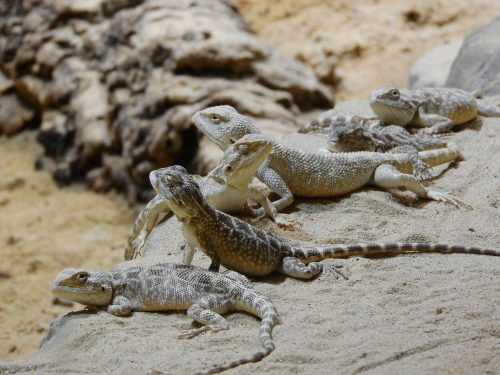
By Racheli Vox, Angle, Science and Environment News Agency
Among the dry leaves, on a small island off the northwestern coast of Madagascar, a tiny lizard, slightly larger than the head of a match, is hiding. The lizard, which is only about three centimeters long, spends most of its day on the ground, and in the evening climbs a tree to spend the night on it. The dwarf leaf chameleon from Madagascar is one of the smallest reptiles in the world. The chameleon lives in a remote area and its habitat is very small. It was discovered by chance by a research expedition that surveyed the forests of Madagascar for over eight years.
The chameleon has since modeled in countless photos in which she sits on a match, and has done quite a bit of PR for the reptile family, which usually doesn't grab headlines in the newspapers. However, not everything is rosy - the chameleon lives only in a very limited area in Madagascar, which is threatened by illegal logging. If the chameleon's habitat is damaged it could become extinct, and millions of years of evolution that brought this special animal into the world would be wiped out with a single wave of a saw.
In a world where nature suffers from increasing human damage, mapping the distribution of animal species is an important task, because in order to protect animals, plan and establish reserves for them, research their lifestyle and the factors that endanger them, one must first and foremost know where they live.
Now, in a new study led by Israeli researchers, the distribution of all reptiles in the world has been mapped. This extensive information joins the existing maps of the distribution of mammals, birds and amphibians, thus completing the picture of the distribution of all terrestrial vertebrates. Beyond the scientific importance of the comprehensive reptile mapping, the information that emerges from it indicates that the conservation programs that exist today are not adapted to preserve the reptiles.
Density map of reptile species in the world:
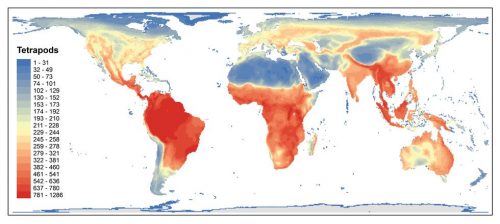
Reptiles are less sexy
The group of reptiles consists of animals that are very different from each other: crocodiles, snakes, lizards and turtles are all included in this group. The reptiles have to change their behavior according to the environmental conditions in order to independently regulate their temperature (but they are not "cold-blooded" - the body temperature of active reptiles is usually higher than 30 degrees and sometimes even reaches 40 degrees or more).
In addition, reptiles have scales that cover their skin. However, the various reptiles are very different from each other in their lifestyles, shape, and size: from dwarf geckos that are about 20 millimeters long and weigh no more than a tenth of a gram, to the sea crocodile, which can reach six or even seven meters in length and weigh over a thousand kilograms . Reptiles are a significant factor in the ecosystem - as predators, as prey, as seed dispersers and more. In the new study, published this week in the journal "Nature Ecology & Evolution", the researchers mapped the areas of distribution of over ten thousand reptile species, which make up 99 percent of the known species. The mission, which lasted over a decade, was carried out by a team of more than 30 researchers from around the world, many of them Israeli, and led by Prof. Shay Meiri from the Steinhardt Museum of Nature at Tel Aviv University, and Dr. Uri Roll, a conservation researcher from the University of Oxford (now at Ben-Gurion University).
Roll says that the mapping of the reptiles was more difficult than the mappings that preceded it, and therefore also took longer. According to him, the locations of the mammal, bird and amphibian species were systematically recorded in a limited number of comprehensive books, so it was easy to map them all. But the picture was different in reptiles: "This information simply did not exist", he says. "Beyond that, the reptiles are also considered less 'sexy', they are less in the public eye - and less in the eye of the scientists."
To produce similar information about the reptiles, the researchers had to review thousands of books and articles, as well as museum and other databases. The researchers reviewed the information, examined documentation of all kinds of reptiles - including those that had not been seen for decades - and created an orderly and detailed map from all this sporadic information.
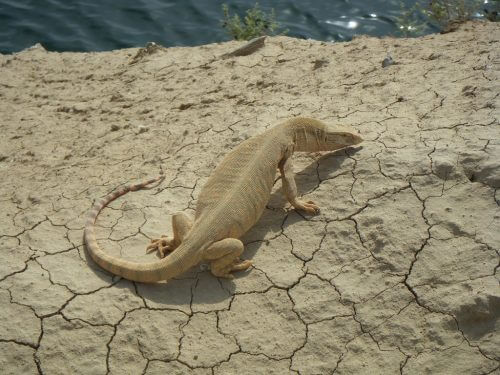
As mentioned, beyond the scientific value of the information collected, the mapping of the habitats of the reptiles also reveals the need to amend the existing conservation plans in order to protect them as well. An example of this is the lizards, a huge group that includes over 6,500 species (for comparison, about 6,000 species of mammals are known worldwide today): the highest species richness of lizards is precisely found in desert and sub-desert areas, while in birds, mammals and amphibians the number of species It decreases as you move away from the equator, and is especially low in deserts.
Due to the different distribution, the current conservation plans, which focus on the habitats of the other species, do not adequately protect the lizards. In addition, according to the authors of the study, resources can be divided so that they better protect reptiles without harming other species.
For example, in cases where there are two areas where exactly the same species of mammals, birds and amphibians live, but only in one of them lives a species of reptile - thanks to the new mapping, it will be possible to invest more conservation efforts in this area. "With the same money we can achieve more for all species, including the reptiles," says Roll, who led the data analysis.
The habitats of the reptiles in need of protection in the world (in blue):
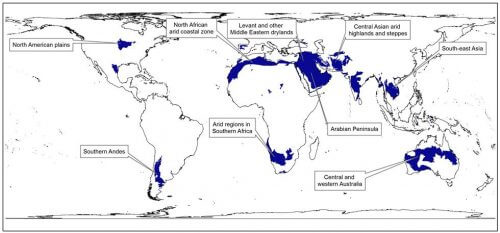
2,000 Mini Reptiles
Naturally, during the long period in which the mapping was carried out, quite a few new species of reptiles were discovered: over 2,000 species, in fact. "Every three to four months or so we have to update all our information," says Roll. "It makes the work very difficult and complex."
In about a year, the researchers will publish an organized database on the Internet that will include distribution maps of all the species of reptiles that have been mapped. The repository, like the article, will be updated to August 2015, and the new reptiles discovered since then will have to wait. "These days we are working on the next version of our database, which already includes over two hundred additional species."
Another possible problem with such an extensive database, which records the location of rare species, is the danger that illegal hunters and collectors will use it to find out the location of the reptiles and thus harm them. However, Roll claims that the new reservoir will not harm the reptiles.
"Whoever is looking for a certain rare animal of a single species knows where it is with the same level of accuracy, if not higher, even without having our information," he says. "Beyond that, I hope that the information we will provide will be a crucial tool for people and organizations involved in the protection of reptiles in particular and nature as a whole (even against illegal hunting and collection) - this is the main goal that has been in front of our eyes throughout the years of collecting information."
According to Uri, the team of researchers held quite a few discussions on the subject: "This is more important to us than anyone else, these animals are in our souls."
To protect the reptiles of Israel
As part of the worldwide mapping carried out in the study, it was found that compared to other regions of the world, Israel is characterized by a high richness of reptile species. "The reptiles raise Israel's horn," says Roll. Israel is characterized by many reptiles, some of which are endemic or almost endemic species, i.e. species whose distribution in the world is limited to Israel or Israel and its immediate surroundings. This phenomenon mainly (but not only) characterizes the Hermon, where you can find rare endemic species such as the Hermon gecko and the Hermon viper.
These species, which are limited in their distribution, as well as non-endemic species, are greatly affected and may become extinct due to damage to their natural habitats. Reptiles living in Hermon are harmed due to the activities of the army and the ski resort there, as well as due to illegal collection by animal dealers and reptile enthusiasts.
Reptiles that live in sandy areas on the coastal plain, in the north of the Negev and in the Arabah are at risk because of land uses for construction, agriculture and sand mining. Shenonit Beer-Sheva, a lizard endemic to Israel that lives in the north of the Negev, is in serious danger of extinction due in part to afforestation carried out by the National Fund for Israel and due to construction being carried out in the area, and other changes in land designations that all harm the loess soil on which it lives.
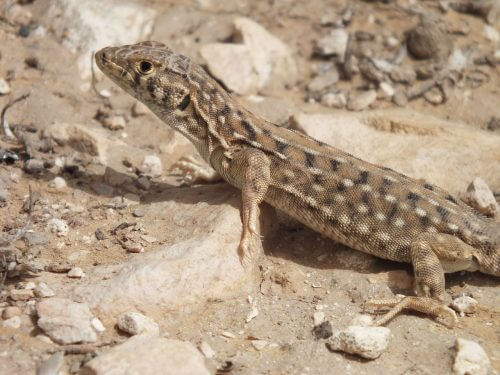
Reptile species that live in freshwater bodies are harmed, among other things, as a result of water pollution: for example, the population of the soft-shell turtle, which used to be common in most coastal streams, has been significantly reduced since the beginning of the twentieth century.
Roll says that in order to preserve the reptiles of the land and the animals of our country in general, a significant change of attitude is necessary. "We need to think about a more informed policy at a national level to protect our animals and characterize in a better way the places where they live and their requirements in order to continue to exist for years, and thus protect them in a better way."
According to him, the steps required are many and not simple. "In Hermon, part of the human activity needs to be stopped and regulated. On the coastal plain, it is necessary to make sure that nature reserves of natural sands are not damaged and to increase them. We need to make sure that large areas of loess in the north of the Negev are preserved, this is a unique habitat not only for the Be'er-Sheva swallow but also for other animals such as the Havra. We need to protect fresh water bodies and make sure that the illegal discharge of sewage is stopped. There are certain species that need breeding programs in zoos followed by a return to the wild."
According to Rolle, awareness is a major part of change. "It is very important to raise awareness of the profound importance of preserving the nature of our country, even on its lesser-known sides, such as the reptiles."

2 תגובות
And it is also written: there is a tiny lizard hiding in it, which is slightly bigger than the head of a match. The lizard, which is only about three centimeters long.
What size match is it then?
Write :
"Dwarf geckos that are about 20 millimeters long and weigh no more than a tenth of a gram"
is that so ? A gecko whose specific gravity is so low?
Sammit that if she "grows" to 20 cm, her weight will be one gram?
Does that make sense to you?